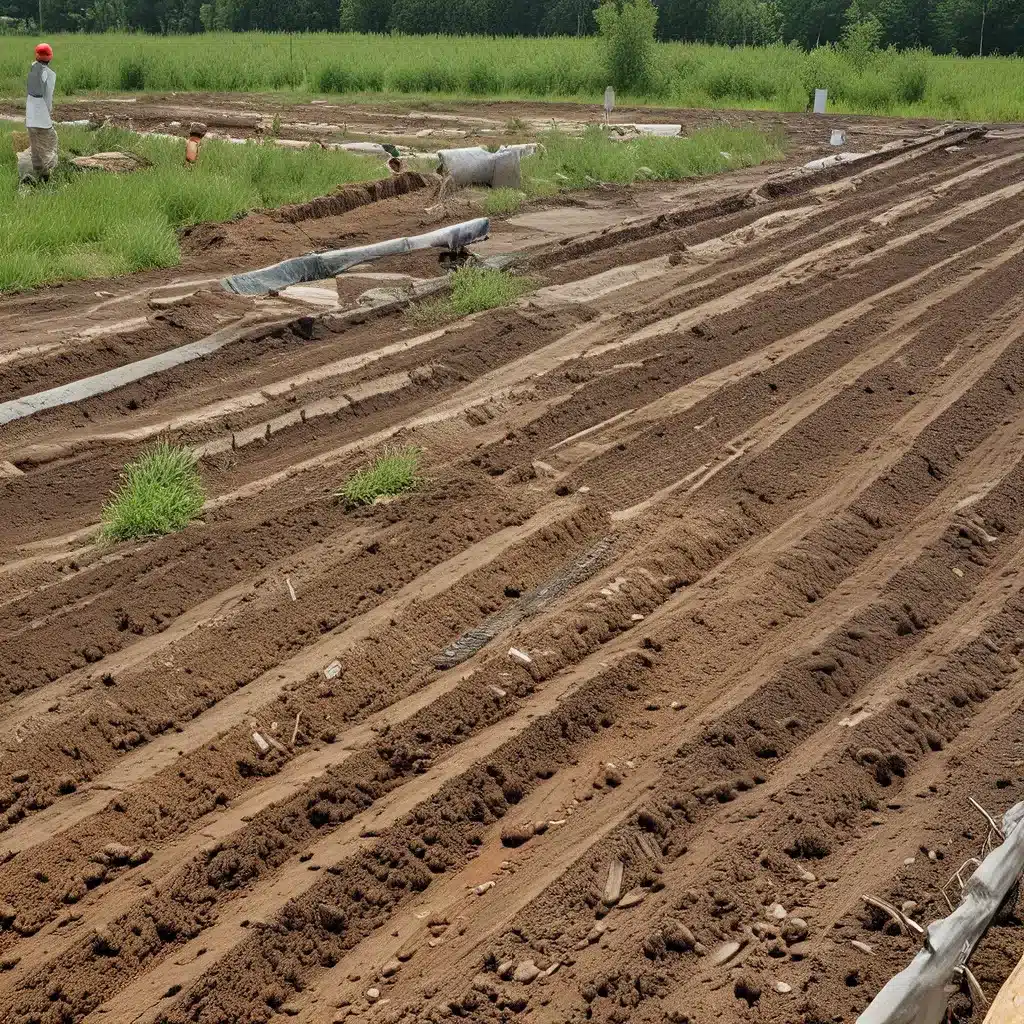
In the ever-evolving world of environmental restoration, the concept of sustainable site remediation has emerged as a beacon of hope. As the global community grapples with the pressing challenges of climate change, resource scarcity, and the need for responsible development, it’s clear that a holistic approach is required to address the complex web of environmental, economic, and social factors at play.
The Rise of Green and Sustainable Remediation (GSR)
Historically, site remediation efforts have often focused solely on the immediate task of addressing contamination, with little consideration for the broader implications. However, as the Interstate Technology & Regulatory Council (ITRC) explains, a more comprehensive approach known as Green and Sustainable Remediation (GSR) has gained traction in recent years. GSR is defined as “the site-specific use of products, processes, technologies, and procedures that mitigate contaminant risk to receptors while balancing community goals, economic impacts, and net environmental effects.”
This shift in perspective has been driven by a growing recognition that the long-term sustainability of a remediation project is just as crucial as the immediate environmental benefits. By considering the environmental, economic, and social impacts of a site cleanup, decision-makers can develop strategies that not only address contamination but also contribute to the overall well-being of the community and the planet.
Weighing the Tradeoffs
Implementing sustainable site remediation is no easy task. It requires a delicate balancing act, as practitioners must navigate the often-competing priorities of environmental protection, economic feasibility, and social equity. This can be a daunting challenge, but it is one that must be confronted head-on if we are to achieve truly sustainable solutions.
One of the key considerations in sustainable site remediation is the environmental impact of the cleanup process itself. Traditional remediation methods, such as soil excavation or groundwater extraction, can be resource-intensive and generate significant greenhouse gas emissions. Fortunately, the GSR approach encourages the use of renewable energy sources, energy-efficient technologies, and sustainable material sourcing to minimize the carbon footprint of the remediation effort.
However, the environmental benefits must be weighed against the economic realities. Site remediation can be a costly undertaking, and decision-makers must ensure that the chosen approach is financially viable for the project stakeholders, including the property owner, the community, and any regulatory bodies involved.
This is where the concept of “balanced decision-making” comes into play. As outlined in the New Jersey Department of Environmental Protection’s (NJDEP) Guidance for Green and Sustainable Remediation, practitioners must consider factors such as cost, energy usage, greenhouse gas emissions, waste generation, and impacts on the local community to arrive at the most sustainable solution.
Embracing the Triple Bottom Line
Sustainable site remediation is not just about minimizing environmental harm; it’s also about fostering meaningful social and economic benefits. This is where the concept of the “triple bottom line” comes into play, which emphasizes the importance of balancing environmental, economic, and social impacts.
From an economic standpoint, sustainable remediation can create local job opportunities, boost property values, and attract new businesses to the area. By leveraging green technologies and sustainable practices, remediation projects can stimulate the growth of the “green economy,” providing opportunities for innovation and entrepreneurship.
At the same time, sustainable remediation must consider the needs and well-being of the local community. This may involve engaging stakeholders, addressing environmental justice concerns, and ensuring that the cleanup process does not disproportionately burden vulnerable populations. By prioritizing social equity, practitioners can build trust and foster long-term community support for the project.
Overcoming Challenges and Embracing Innovation
Implementing sustainable site remediation is not without its challenges. The complexities of balancing environmental, economic, and social factors can be daunting, and there may be resistance from stakeholders who are accustomed to more traditional approaches.
However, the benefits of sustainable remediation are undeniable. By embracing innovative technologies, collaborative decision-making, and a holistic view of the project’s impacts, practitioners can unlock new possibilities for environmental restoration that truly benefit the planet and its people.
One promising avenue is the integration of renewable energy sources into the remediation process. As explored in a study published in Remediation, the use of solar, wind, or geothermal energy can significantly reduce the carbon footprint of remediation activities, while also providing a sustainable source of power for site operations.
Another area of innovation is the application of green infrastructure and nature-based solutions. By incorporating elements like constructed wetlands, permeable surfaces, and native vegetation into the remediation design, practitioners can not only address contamination but also enhance ecosystem services, improve biodiversity, and create more livable and resilient communities.
Embracing the Future of Sustainable Remediation
As the world continues to grapple with the complex challenges of environmental restoration, the importance of sustainable site remediation cannot be overstated. By embracing a holistic approach that balances environmental, economic, and social impacts, we can unlock a future where remediation efforts not only address contamination but also contribute to the overall well-being of our communities and our planet.
At Inland Waters Inc., we are committed to leading the way in the realm of sustainable site remediation. Our team of experts draws upon the latest research, innovative technologies, and collaborative decision-making to develop tailored solutions that meet the unique needs of each project.
By working closely with regulators, community stakeholders, and industry partners, we strive to create lasting, impactful change that benefits the environment, the economy, and the people we serve. It’s a bold vision, but one that we believe is essential for a sustainable future.
So, let’s embark on this journey together, and discover the transformative power of sustainable site remediation. The path ahead may be challenging, but by embracing a spirit of innovation and a commitment to the triple bottom line, we can create a better world for generations to come.


